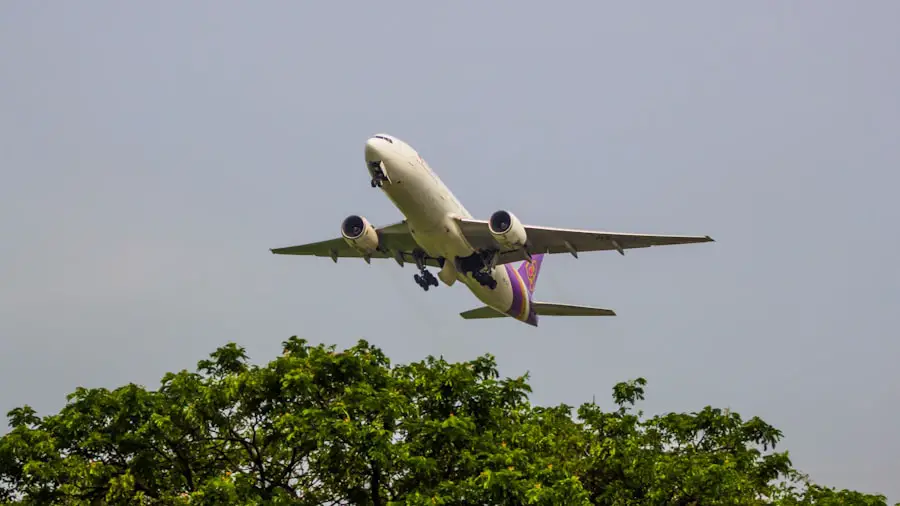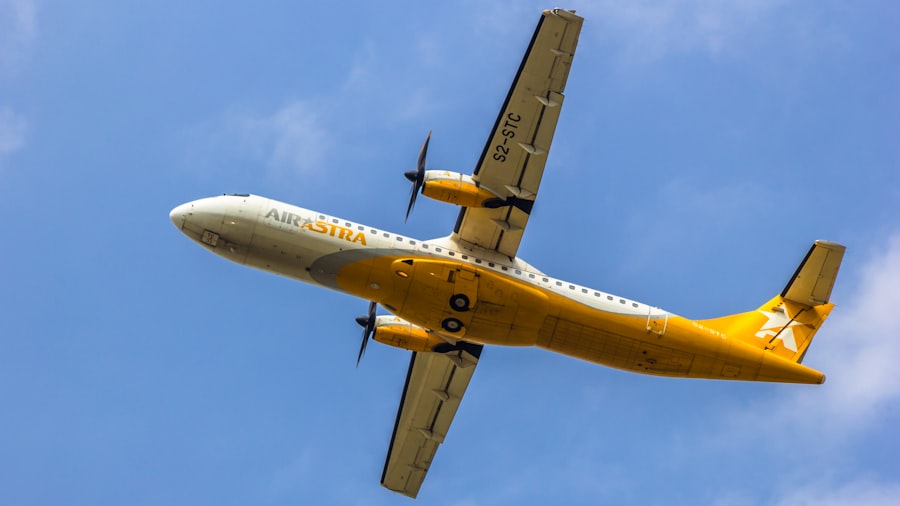Allegiant Air, a low-cost carrier based in Las Vegas, Nevada, has carved out a niche in the competitive airline industry since its inception in 1997. The airline primarily focuses on providing affordable travel options for leisure travelers, connecting small to medium-sized cities with popular vacation destinations across the United States. Allegiant operates a point-to-point route structure, which allows it to bypass major hubs and offer direct flights to its customers.
This operational model not only reduces costs but also enhances convenience for travelers seeking direct access to their desired locations. The airline’s business model is characterized by its no-frills approach, where passengers can purchase base fares at competitive prices while having the option to pay for additional services such as seat selection, baggage, and in-flight refreshments. This strategy has proven effective in attracting budget-conscious travelers who prioritize cost over luxury.
Allegiant’s focus on leisure travel has allowed it to thrive in a market where many traditional carriers have struggled, particularly during economic downturns. As the airline continues to expand its route network and fleet, it remains a significant player in the low-cost travel segment.
Key Takeaways
- Allegiant Air is a low-cost American airline that operates scheduled and charter flights.
- The airline has had a history of safety incidents and has been criticized for its safety record.
- Allegiant Air has faced scrutiny over its maintenance practices and the age of its fleet.
- The airline has been questioned for its pilot training and experience, with concerns raised about the qualifications of its pilots.
- Allegiant Air has faced regulatory scrutiny and has been fined for non-compliance with safety regulations.
Safety record and incidents
Allegiant Air’s safety record has been a topic of scrutiny and discussion among aviation experts and passengers alike. While the airline has experienced incidents that have raised concerns, it is essential to contextualize these events within the broader framework of commercial aviation safety. Allegiant has faced several mechanical issues over the years, leading to emergency landings and diversions.
For instance, in 2015, an Allegiant flight from Las Vegas to Fresno had to return shortly after takeoff due to an engine failure. Such incidents can understandably cause alarm among passengers; however, they are not uncommon in the aviation industry, particularly for airlines operating older fleets. The airline has made significant strides in addressing safety concerns and improving its operational protocols.
Allegiant has invested in upgrading its fleet and enhancing maintenance practices to ensure compliance with Federal Aviation Administration (FAA) regulations. The airline’s commitment to safety is reflected in its adherence to rigorous maintenance schedules and inspections, which are critical for preventing incidents and ensuring passenger safety. Despite past challenges, Allegiant’s overall safety record remains comparable to that of other low-cost carriers, and the airline continues to work diligently to maintain and improve its safety standards.
Maintenance and fleet information

Allegiant Air operates a fleet primarily composed of Airbus A320 family aircraft, which includes the A319 and A320 models. This choice of aircraft is strategic, as these planes are known for their fuel efficiency and reliability, making them well-suited for Allegiant’s business model focused on cost-effective operations. The airline has been gradually modernizing its fleet, with plans to phase out older aircraft in favor of newer models that offer enhanced performance and lower operating costs.
Maintenance is a critical aspect of Allegiant’s operations, especially given the scrutiny surrounding its safety record. The airline employs a comprehensive maintenance program that adheres to FAA regulations and industry best practices. This program includes regular inspections, preventive maintenance, and adherence to manufacturer guidelines for aircraft upkeep.
Allegiant has also established partnerships with reputable maintenance organizations to ensure that its fleet is maintained to the highest standards. By prioritizing maintenance and investing in newer aircraft, Allegiant aims to enhance both safety and operational efficiency.
Pilot training and experience
| Category | Metrics |
|---|---|
| Training | Number of hours of flight training |
| Experience | Number of total flight hours |
| Qualifications | Type ratings and certifications |
| Simulator Training | Hours of simulator training |
The training and experience of pilots are paramount in ensuring the safety and reliability of any airline. Allegiant Air places significant emphasis on pilot training programs that meet or exceed FAA requirements. New pilots undergo rigorous training that includes simulator sessions, ground school instruction, and flight training with experienced instructors.
This comprehensive approach ensures that pilots are well-prepared to handle various flight scenarios, including emergency situations. In addition to initial training, Allegiant pilots participate in recurrent training programs designed to keep their skills sharp and up-to-date with the latest aviation regulations and technologies. These programs include regular simulator sessions that simulate real-world flying conditions, allowing pilots to practice emergency procedures and decision-making skills in a controlled environment.
The airline also emphasizes the importance of experience; many of Allegiant’s pilots come from diverse backgrounds, including military aviation and other commercial airlines, bringing a wealth of knowledge and expertise to the cockpit.
Safety regulations and compliance
Allegiant Air operates under strict safety regulations set forth by the Federal Aviation Administration (FAA) and other governing bodies within the aviation industry. Compliance with these regulations is non-negotiable for any airline, as they are designed to ensure the safety of passengers and crew members alike. Allegiant’s commitment to adhering to these standards is evident in its operational practices, which include regular audits and inspections by both internal teams and external regulatory agencies.
The airline’s compliance efforts extend beyond mere adherence to regulations; Allegiant actively seeks to foster a culture of safety within its organization. This includes encouraging open communication among employees regarding safety concerns and implementing feedback mechanisms that allow staff members to report potential issues without fear of reprisal. By prioritizing safety culture alongside regulatory compliance, Allegiant aims to create an environment where safety is ingrained in every aspect of its operations.
Customer satisfaction and complaints

Customer satisfaction is a critical metric for any airline, particularly for low-cost carriers like Allegiant Air that rely on repeat business from budget-conscious travelers. While Allegiant has garnered a loyal customer base due to its affordable fares and direct routes, it has also faced criticism regarding customer service and operational reliability. Passengers have reported issues ranging from delayed flights to difficulties with baggage handling, which can significantly impact their travel experience.
To address these concerns, Allegiant has implemented various initiatives aimed at improving customer service and enhancing the overall travel experience. The airline has invested in technology upgrades that streamline the booking process and provide real-time updates on flight status. Additionally, Allegiant has increased staffing levels at key locations to ensure that customer inquiries are handled promptly and efficiently.
Despite ongoing challenges, the airline remains committed to listening to customer feedback and making necessary adjustments to improve satisfaction levels.
Comparison with other airlines
When comparing Allegiant Air with other airlines, particularly within the low-cost carrier segment, several factors come into play. Allegiant’s unique business model focuses on leisure travel, which differentiates it from competitors like Southwest Airlines or Spirit Airlines that may offer a broader range of services or operate on a more extensive route network. While Allegiant excels in providing direct flights to popular vacation destinations at competitive prices, it may not offer the same level of frequency or connectivity as larger carriers.
In terms of safety records, Allegiant’s performance is generally on par with other low-cost airlines; however, it has faced more scrutiny due to high-profile incidents that have garnered media attention. This scrutiny can impact public perception despite the airline’s efforts to enhance safety measures and compliance practices. Customer satisfaction ratings also vary among low-cost carriers; while some passengers appreciate Allegiant’s affordability, others may prefer airlines that offer more comprehensive services or amenities despite higher fares.
Conclusion and recommendations
In evaluating Allegiant Air’s position within the airline industry, it is clear that the carrier has successfully established itself as a viable option for budget-conscious travelers seeking direct access to leisure destinations. However, ongoing challenges related to safety perceptions, customer service issues, and operational reliability must be addressed for the airline to maintain its competitive edge. To enhance its reputation further, Allegiant should continue investing in fleet modernization and maintenance practices while prioritizing transparency regarding safety measures.
Additionally, improving customer service through staff training and technology upgrades can help mitigate complaints and enhance overall satisfaction levels among passengers. By focusing on these areas, Allegiant Air can solidify its standing as a leading low-cost carrier while ensuring a safe and enjoyable travel experience for all customers.
If you are considering flying with Allegiant Air and are concerned about safety, you may find comfort in reading a related article on noise-cancelling earbuds perfect for your next flight. These earbuds can help you relax and enjoy your flight while blocking out any unwanted noise distractions. It’s always important to prioritize safety and comfort when traveling, and these earbuds can enhance your overall flying experience.
FAQs
Is Allegiant Air a safe airline?
Yes, Allegiant Air is considered a safe airline. It has a good safety record and meets all the necessary safety regulations set by the Federal Aviation Administration (FAA).
What safety measures does Allegiant Air have in place?
Allegiant Air adheres to strict safety protocols and procedures to ensure the safety of its passengers and crew. This includes regular maintenance of its aircraft, thorough safety inspections, and compliance with all FAA regulations.
Has Allegiant Air had any safety incidents in the past?
Allegiant Air has had a few safety incidents in the past, but it is important to note that all airlines, regardless of their size, may experience occasional safety issues. Allegiant Air has taken steps to address any safety concerns and continues to prioritize the safety of its passengers.
How does Allegiant Air compare to other airlines in terms of safety?
Allegiant Air is comparable to other major airlines in terms of safety. It has a similar safety record and is subject to the same safety regulations and oversight as other airlines operating in the United States.
What should passengers do to ensure their safety when flying with Allegiant Air?
Passengers can ensure their safety when flying with Allegiant Air by following all safety instructions provided by the airline, paying attention to the pre-flight safety briefing, and adhering to all safety regulations while on board the aircraft.
